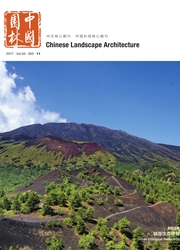

 中文摘要:
中文摘要:
依据景观特征性、典型性、差异性、可靠性、全面性和主客观结合性的原则,初步构建景观旅游吸引力(A)、生命力(V)、承载力(C)评价体系,共选取25个指标(其中吸引力评价11个、生命力评价9个和承载力评价5个)并将每个指标划分为6个级,对AVC进行专项评价.在此基础上通过对景观可游度的计算与分析,将风景旅游地划分为4个不同类型,从而实现对不同类型、不同级差风景旅游区景观规划设计与管理.以北京市郊区县延庆为例,进行了景观AVC与可游度评价的实证研究,得出以下主要结论:①一级和二级可游度地区是在近期可以重点发展生态旅游和大众旅游的主体功能区;三级和四级地区则应当将景观生态保育、资源保护作为近期发展的重点和目标.②主体功能区的划分与规划可以推进区域景观旅游的有序发展和持续发展.
 英文摘要:
英文摘要:
Based on the principles of character, typicality, difference, reliability, totality and combination of objective and subjective, the attractions(A ), validity(V) and capacity(C) evaluation system is established including 25 indicators(among this indicators there are 11 indicators on attractions, 9 indicators on validity and 5 indicators on capacity)and each indicator consists of 6 levels. According to the calculation and analysis of the availability of landscape and tourism, Landscapes are divided into 4 different levels and the landscape planning and management are realized with different strategies at different levels. This paper presents a case study of Yanqing county, the northwest suburb of Beijing, by adopting this evaluation system. Results show that the first and second level availability area should be developed as the prior zoncs with the main functions of eco-tourism and mass tourism; the third and the fourth level availability area should be developed as the prior zones with the main functions of landscape ecology conservation and landscape resources reservation. The division and planning of main function region are helpful to the regional sustainable development.
 同期刊论文项目
同期刊论文项目
 同项目期刊论文
同项目期刊论文
 期刊信息
期刊信息
